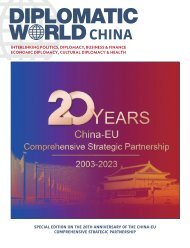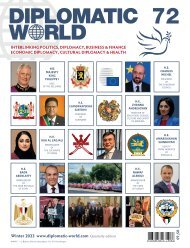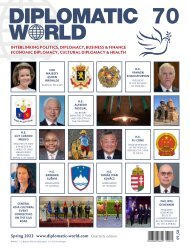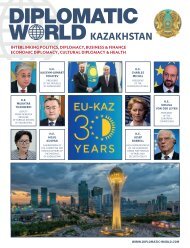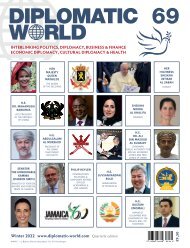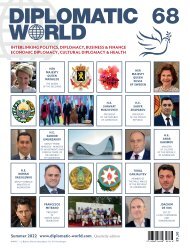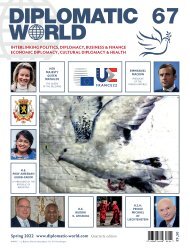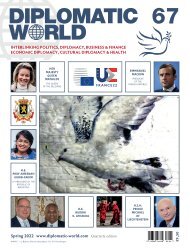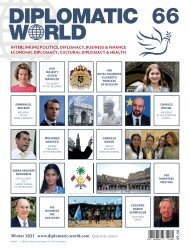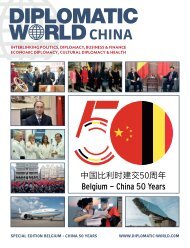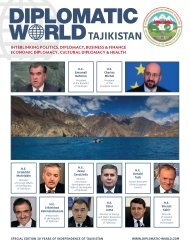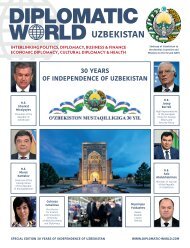You also want an ePaper? Increase the reach of your titles
YUMPU automatically turns print PDFs into web optimized ePapers that Google loves.
Doge’s Palace of the UNESCO <strong>World</strong> Heritage city of Venice<br />
© <strong>Diplomatic</strong> <strong>World</strong><br />
the EU is looking to increase investment towards the<br />
tourism industry. As such, the EU is continuing to work<br />
with Chinese authorities to eliminate the existing barriers<br />
which hinder bilateral relations in this sector. And thirdly,<br />
the EU hopes that the ongoing negotiations on EU-China<br />
visa facilitation and air connectivity, will advance<br />
smoothly.<br />
From the Chinese side, during the opening ceremony,<br />
Prime Minister Li Keqiang sent a message to the audience<br />
underlining that the importance of fostering a solid<br />
and strategic partnership in this sector is twofold. On<br />
one hand, strengthening bilateral ties enhances cultural<br />
exchanges while, on the other, it foster international<br />
friendship between both blocs.<br />
According to Mr Li, this initiative will “extend China-<br />
EU tourism cooperation and personnel exchanges and to<br />
promote dialogue, development and mutual benefits.”<br />
In general, economic relations between the EU and<br />
China are not always easy. Tourism, however, offers<br />
a wide range of opportunities for both sides, and the<br />
developments go to show that it is, indeed a profitable<br />
sector. Specifically in the case of Chinese outbound<br />
tourism, it is important to look back to the political<br />
context surrounding this sector — only thirty-five years<br />
ago.<br />
In 1983 the Chinese government took the first step<br />
towards liberalizing travel, allowing citizens to leave the<br />
country under the strict condition that they visit relatives<br />
abroad. This policy lasted for over a decade when, in<br />
1997, travel restrictions were dropped for all citizens,<br />
marking the official start of outbound travel from China.<br />
This is where Chinese start discovering traveling for<br />
leisure. Today, the country is the largest market source of<br />
international tourists in the world.<br />
This change has been exponential, shifting global<br />
travel movements and strongly impacting the economic<br />
landscape. According to the China Daily, 69.5 million<br />
people travelled to China in 2017. On the flipside, in<br />
2016, Chinese travellers accounted for 136.8 million of<br />
international tourism abroad, spending over USD 200<br />
billion. 48.8% of border crossings were within the Greater<br />
China, while 51.2% of the total were outside. This switch<br />
was particularly evident in 2016, the first year in which<br />
more Chinese tourists travelled to destinations beyond<br />
Greater China than to those within it.<br />
95





